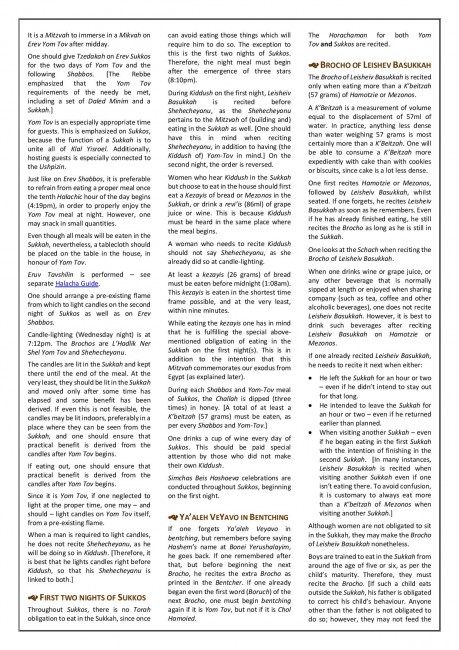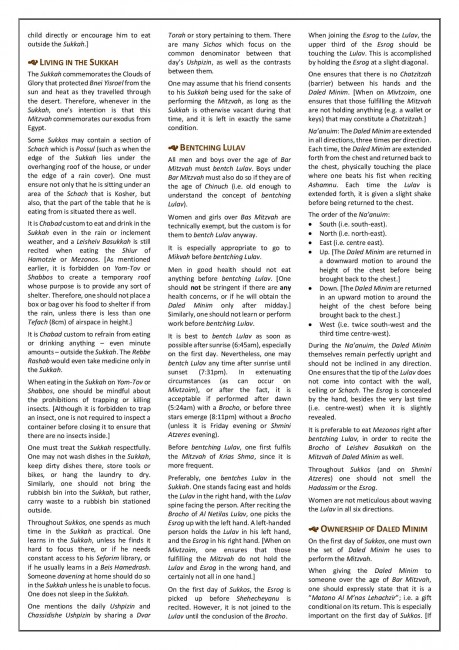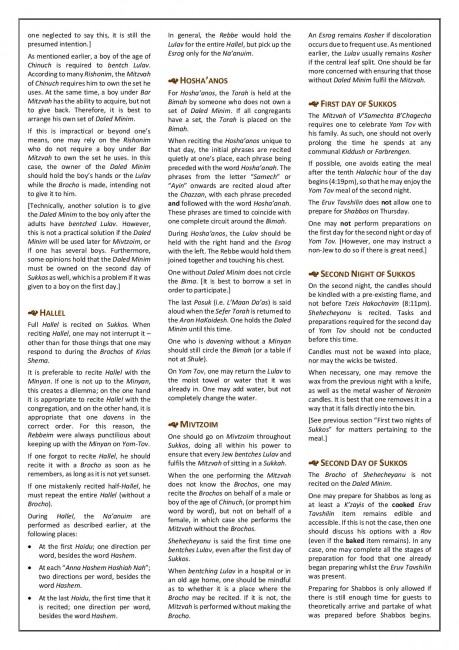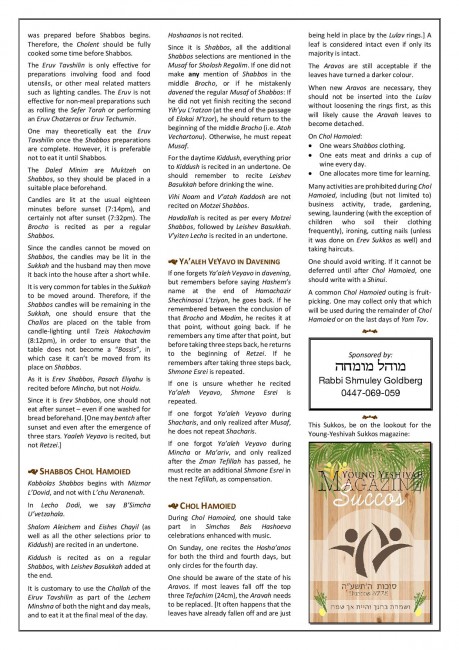
Laws and Customs: Sukkos
Rabbi Shmuel Lesches, Maggid Shiur in Yeshiva Gedola of Melbourne, Australia, has compiled a guide to the laws of Sukkos (up to – but not including – Hoshanah Rabbah), including the laws of building a Sukkah, for the benefit of the wider Lubavitch community.
Click on the images below to enlarge the text, or here to view in PDF format. Click here for the laws and customs of Eruv Tavshilin.
Please note: All times listed are for Melbourne only.





















c
Thanks once again for this wonderful resource
2 Questions.
What is the source that it is a mitzvah to go to mikvah erev Sukkos?
Also about the measurement that its based on density the Alter Rebbe writes in hilchos pesach in regards to a kesayis that it is measured in size and we dont deduct anything fro the air pocket holes in the matzah meaning we dont care about density.
Density
This article matches what the Alter Rebbe says. A kezyis is measured by volume. Water is dense, so a kezayis of water is relatively heavy. Anything less dense than water, and certainly something which has many small air pockets, is going to weigh less than the weight of a kezayis of water. Therefore, anything which weighs the same as a Kezayis of water is really much more than a Kezayis, and can safely be used.
Ch'er
Where the Makor that’s it’s the chabad custom to have 4 complete walls?
To #2
Sefer HaMinhagim
To #1
1. See Sefer HaMinhagim p.92
2. It is true that we don’t generally care about density, but large air pockets can’t be counted as part of a kezayis. If I understand correctly, the measurement given in this article is based on R’ Chaim Noeh’s p’sak that a kezayis of bread is 27 grams. That is the most a kezayis of bread could possibly weigh and guarantees the minimum required volume even if there are air pockets.